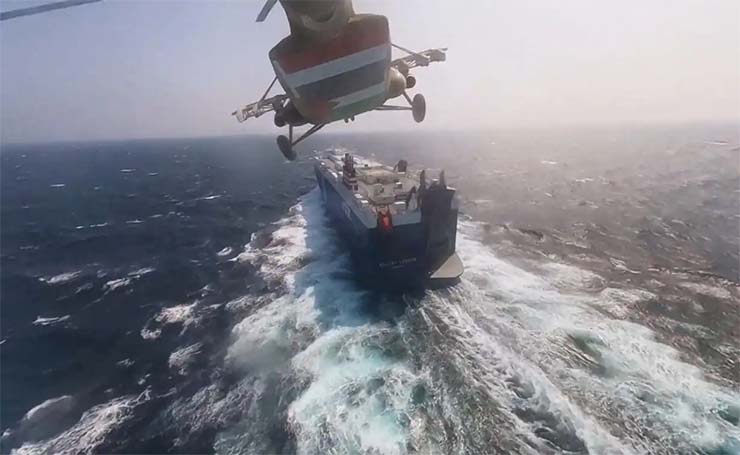
Washington: Yemen’s Houthi rebels harassing crowded shipping lanes in the Greater Middle East, eliciting responses from the US military and other forces, are relying on foreign arsenals for their missiles and drones in the air and on the water.
According to experts, the militant group based in Yemen, from where Red Sea and Gulf of Aden bombardments have sprung, is using Iranian technology and its derivatives. The regime has long propped up a constellation of combatants in advancement of its own goals, with its assets recently recovered in both Ukraine, after Russian use, and Iraq.
“Despite being the latest militia to join Iran’s axis of resistance network, the Houthis are in possession of some of the most sophisticated copies or variants of Iranian weapons,” said Behnam Ben Taleblu, a senior fellow at the Foundation for Defence of Democracies think tank.
The arms wielded include unmanned aerial vehicles designed for attacks, such as the Wa’eed-2, analogous to Iran’s Shahed-136 and capable of traveling more than 1,000 miles; anti-ship ballistic missiles; and unmanned surface vessels, or USVs, packed with explosives and dispatched for detonation.
“Tehran and its proxies have become increasingly cognizant of the economic costs imposed on their adversaries to intercept drones, rockets, and missiles, and is something they intend to exploit,” Taleblu said.
The US military’s increasingly computerised weapons are at risk of harassment or hijacking, the Government Accountability Office has said.
“Drones are lower and slower flying than ballistic missiles and may be better suited to controlling escalation. Ballistic missiles, which fly high and fast, require different capabilities to intercept,” he added. “Iran is home to the largest ballistic missile arsenal in the Middle East and has increasingly become a drone power as well.”
Houthis have since mid-November launched at least 25 attacks in the Red Sea area, preying on what they say are Israel-affiliated endeavours in a bid to halt the war in Gaza. The fighting there, sparked by a surprise Hamas offensive, has raged for months with little sign of abatement. It also threatens to further inflame a region already considered a hotbed for extremist activity.
“Between Hezbollah and Houthis, Iran is putting pressure on Israel from both ends, and then they’ve got Hamas inside of Israel providing pressure internally,” said Bryan Clark, a senior fellow and director of the Centre for Defence Concepts and Technology at the Hudson Institute think tank.
The US Navy earlier this month took credit for downing more than 60 missiles and drones, including a flock of the latter encountered by the guided-missile destroyer USS Carney on December 16.
At the service’s disposal are an array of tools, the Standard Missile-2 and 5-inch gun among them, according to Clark. The engagement calculus is complicated by shipboard stockpiles and cost, though. Each SM-2 is worth millions of dollars; Houthi drones are a fraction of that.
The US Navy destroyer Carney shot down multiple missiles and drones fired by Iran-allied Houthi rebels in Yemen.
“You have to engage them at short range, if you want to do it cost-effectively. So you have to get familiar with, well, how close can that drone get without being a problem? How long does it take to get to me from that place?” Clark said. “That’s probably the biggest thing, is getting that comfort and familiarity with how to engage drones with the best weapons that don’t take up your magazine capacity.”
Leaders from the US, UK, Australia, Bahrain, South Korea and more have condemned Houthi aggression while also promising military retaliation. US troops sunk three Houthi boats and killed their crews after responding December 31 to distress calls from the Maersk Hangzhou container ship.
Vice Adm. Brad Cooper, the head of US Navy operations in the Greater Middle East, described the clashes in the Red Sea as an “international problem that requires an international solution.” Cooper on January 4 briefed reporters about Operation Prosperity Guardian, a defensive coalition assembled to ensure safe passage of commercial vessels.
Some 1,500 ships have moved through the economically vital waters since the start of the operation.
“Regardless of the vessel’s company ownership or its destination, these Houthi attacks are, for sure, destabilising and contrary to international law,” Cooper said. “It’s up to the Houthis to halt the attacks. They’re the instigator and initiator.”








